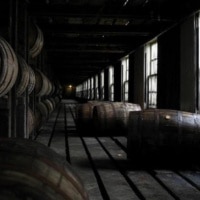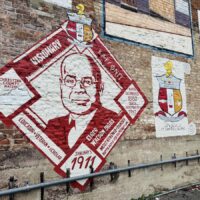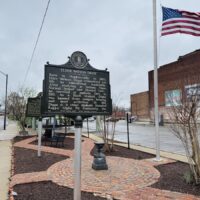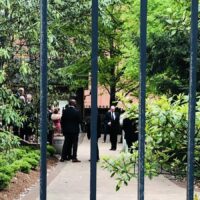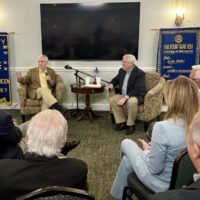Two years after stripping everything modern out of the Dalton house kitchen — and I don’t know how many splinters later — we are finally putting it back together again. I’ll take this opportunity to revisit the kitchen, a room rife with history.
Anatomy of a 1907 kitchen
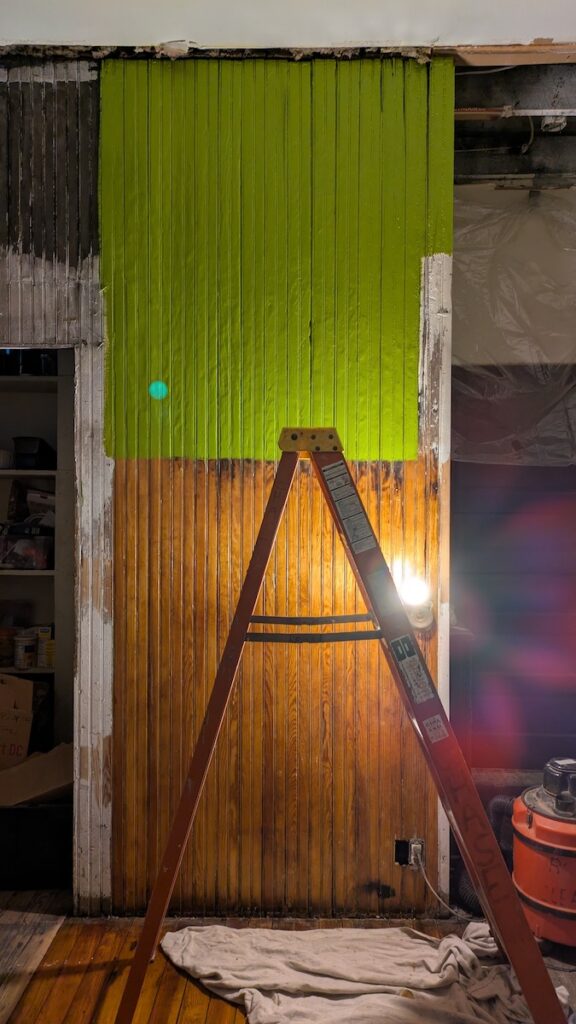
The modern kitchen, with walls lined with built-in cabinets and counters, didn’t emerge until the late 1920s. Kitchens of the early 1900s had only a few fixed elements, such as a range, a sink, and usually some open shelving or racks to hang pots and pans. Nearly all other kitchen furnishings were moveable. Large, zinc-coated tables were used for food preparation, a baking cabinet (these are nearly universally called Hoosier cabinets, although Hoosier was a specific brand), a hutch for dishes, an icebox, and numerous other little tables comprised a turn of the century kitchen.
Between scraps of historic materials we’ve found and Sarah Dalton Todd’s memoir, “Quality Hill,”we probably know more about the kitchen at 713 E. Seventh St. than any other room in the house. The point in time that interests me the most is circa 1915, when it seems that the Daltons did an intensive update to the space that gave it the form it now has.
The 1915 update
Originally a single room, the Daltons split the kitchen into three separate spaces, blocking out a pantry and butler’s pantry with a beadboard partition wall. This wall matched the room’s existing shellacked beadboard ceiling. They freshened up the plaster walls as well, repainting them with the same glossy apple green oil paint.
The late 19th century discovery of germs as the basis for disease touched off a craze for sanitation. We see this in the design of subsequent hospitals, bathrooms, and kitchens. Early 20th century kitchens were much cleaner and brighter places than their 19th century predecessors. Hard, “sanitary” surfaces like zinc table tops, high-gloss finishes on walls and ceilings, and tile replaced the porous, usually wooden, table tops of 19th century kitchens. This is the time subway tiles first appeared on kitchen walls, a design trend still used in today’s kitchens.
The Daltons also installed a linoleum floor during the circa 1915 update. The pine floor at the bottom is unfinished, suggesting it was originally intended to be covered with a hardier material. But, as we have found no earlier floor covering, we just don’t know what was there. It may have been simply an unfinished wood floor. We have decided to patch, sand, and refinish it. Despite any misgivings, it is refinishing beautifully.
In the pantry, we found a sizeable piece of the circa 1915 linoleum, buried beneath a later wood floor. We knew it dated to the update, as it was cut to fit around the pantry shelving. The maker’s mark was on the back, Nairn Linoleum. In the history of manufacturing, this name sets bells ringing.
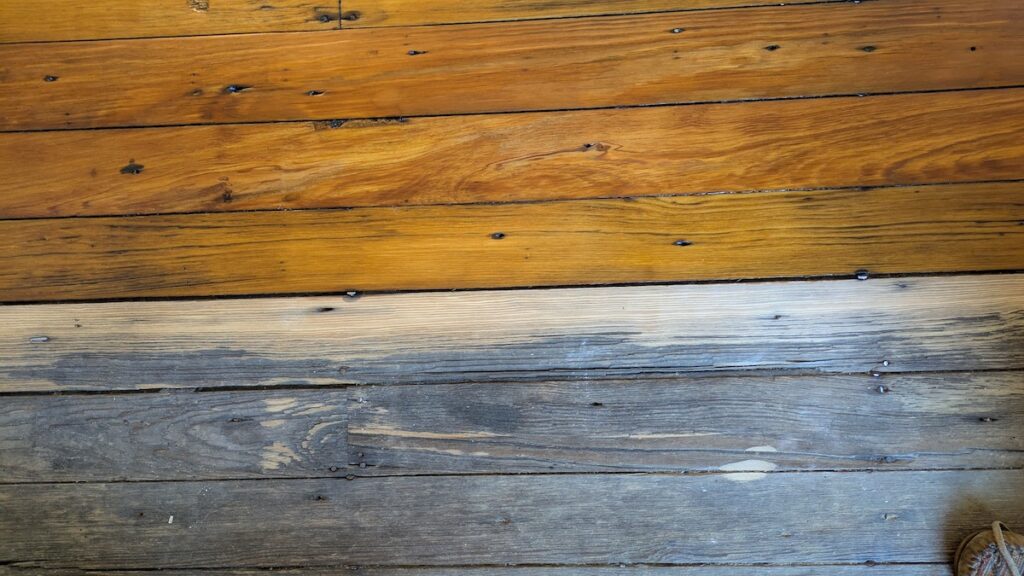
Nairn Linoleum
Nairn Linoleum was based in Kirkaldy, Scotland. Just take a minute and savor that. America in 1907 was already so much a part of a global economy that the floor covering in the Dalton kitchen in Hopkinsville, Kentucky, came from across the Atlantic Ocean! That’s just the first amazing thing. Nairn is not only the company responsible for first manufacturing linoleum, it is also thought to be the first ever example of a generalized product name!
When the Daltons bought the linoleum for their kitchen, Nairn was already nearly 80 years old. Michael Nairn started the company in 1826 as a sailcloth factory in Kirkaldy. His target audience was not shipowners but floorcloth painters.
Floorcloth is the ancestor of linoleum and is a durable floor covering that is easy to clean. It was used throughout the 18th and 19th centuries in high traffic areas such as entry halls and in rooms where one might expect spills, like dining rooms. Floorcloths were made by painting a piece of canvas with many layers. The final coat was usually a colorful pattern that was hand-painted, block-printed, or stenciled. This was coated with about ten layers of varnish.

Nairn’s sailcloth factory soon transitioned to a floorcloth factory. In the late 1840s, Michael Nairn bought the patent for a new kind of floor covering from its inventor, Frederick Walton. This came to be known as linoleum. In its fully evolved form, linoleum was made from a cork base coated with hardened linseed oil, but this early version still had a lot more in common with floorcloth. Nairn came up with an innovation of his own. He baked the “linoleum floorcloths” in large ovens to speed up curing time, and in this way he was able to outpace competitors. After Michael Nairn’s death in 1858, his wife and sons took over running the company.
It was really Michael Nairn Jr. who was the architect of Nairn’s later linoleum dominance, which he helped to ensure by hiring top-notch, well-known designers like Owen Jones. Nairn did so many exciting things, and I have so little space to write about them. I suggest you look them up yourself! The company is still in business under the name of Congoleum.
The Dalton kitchen
I digress; back to kitchen design. Sarah Dalton Todd mentioned a few appliances that could be found in the Dalton kitchen. Her mother, Carrie, had a gas range, a rather fancy thing to find in a middle class Hopkinsville kitchen in 1907. Gas was cleaner to cook on than coal and easier than wood. The Daltons usually had a hired cook, but sometimes Carrie used the kitchen. She also had a beaten biscuit machine, which she passed on to Sarah.
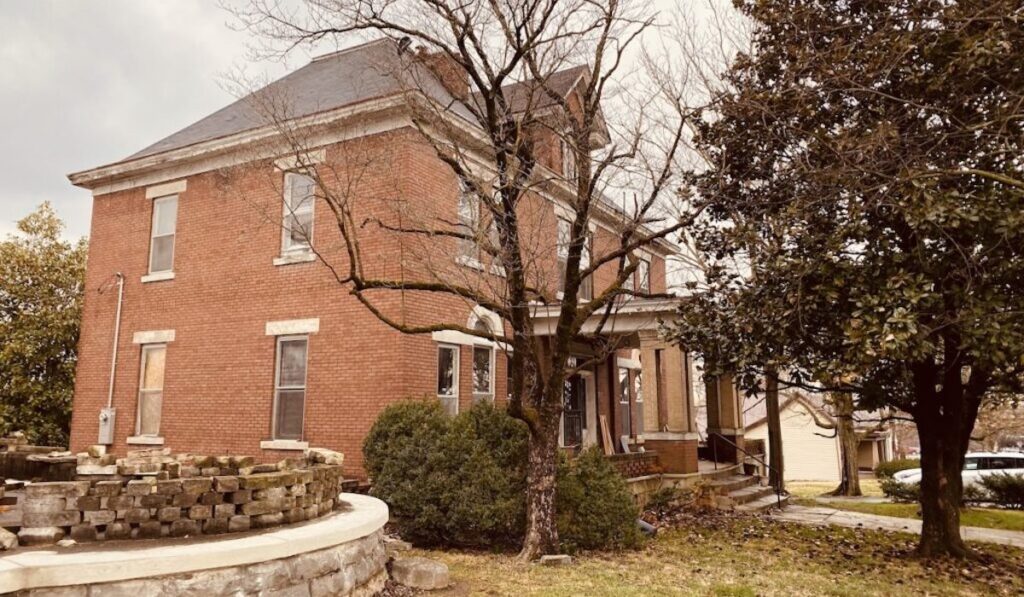
Beaten biscuits
Rarely has a food come bound in so much cultural tackle as the beaten biscuit. Thoroughly American and believed to date to the late 1700s, a dissertation could — and should — be written on the social history of this little biscuit. Originating in the Chesapeake Bay area or coastal North Carolina, beaten biscuits were prized throughout the South.
I have perused many old recipes for beaten biscuits. Some call for sundry random ingredients, but beaten biscuits were most commonly made with just four ingredients: flour, salt, butter or lard, and water. Oh, and intense labor.
Without a reliable source of leaven, cooks ingeniously came up with a method to make biscuits without any baking powder or yeast. They beat and folded the dough over and over again, creating countless thin layers. These trapped air between them, which expanded when heated up and puff up the little biscuits so that they were crunchy and airy at the same time.
Most historic beaten biscuit recipes I’ve found call for at least 30 minutes of beating. The extreme labor involved seems to be one of the reasons the biscuits were so prized. As these were a southern delicacy throughout the 18th and 19th centuries, this labor was usually being provided by an enslaved woman.
It’s no coincidence that beaten biscuit machines first appeared on the market shortly after the abolition of slavery. This labor-saving device greatly reduced the effort involved in making beaten biscuits. Many Kentucky households had a model designed by J.A. DeMuth of St. Louis, Missouri, and manufactured by the Gem Sales Co. in Lexington. Today, these machines are highly collectible, so if you happen to have one — hold onto it.
For an excellent history of the beaten biscuit, see this article, written by Dana Hecker of Holly Hill Inn at Midway outside of Lexington
Beaten biscuits in Hopkinsville
Beaten biscuits remained popular in pockets of the South through much of the 20th century but have been on the wane for decades. Here in Hopkinsville, beaten biscuit machines were common raffle prizes in the first decade of the 1900s.
And in 1917, the F.A. Yost Co. ran an ad suggesting a beaten biscuit machine as a Christmas present, alongside roller skates and pile drivers.
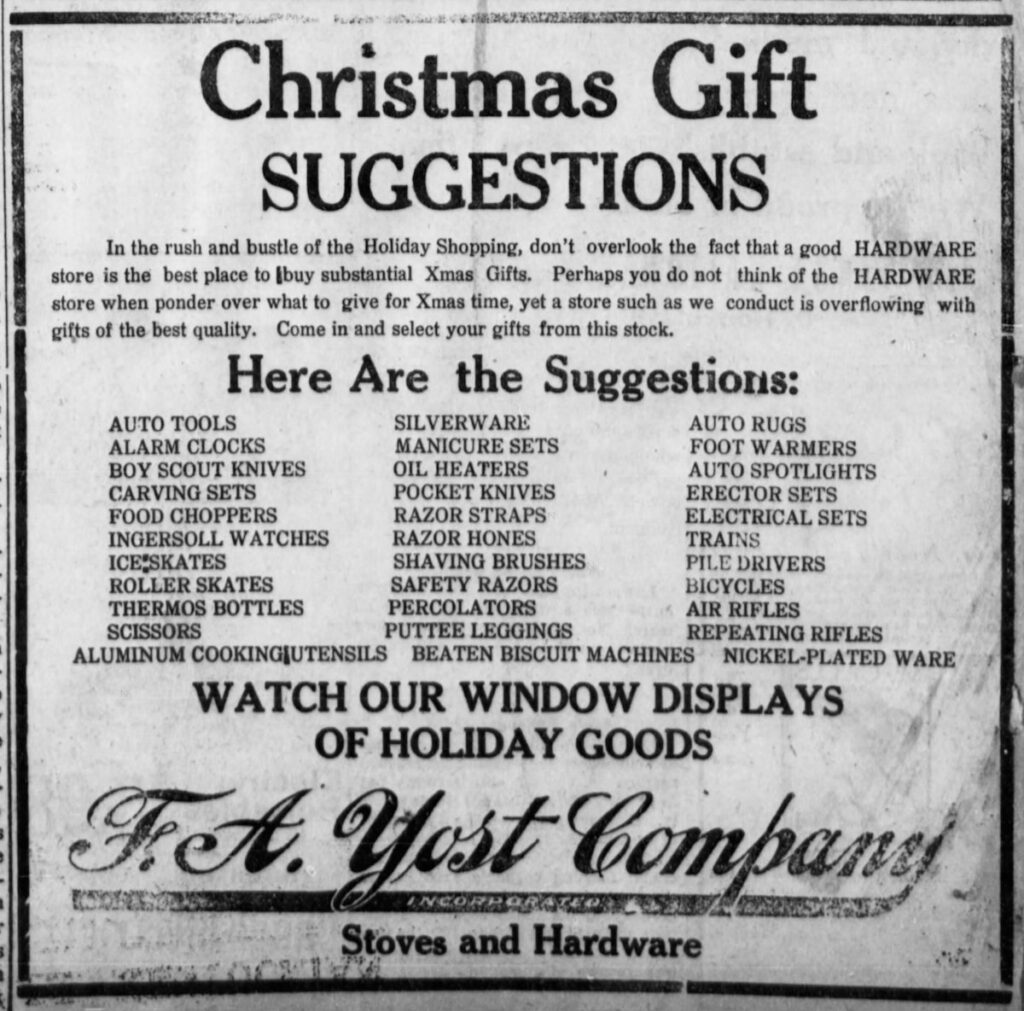
In “Quality Hill,” Sarah Dalton Todd reminisced about sneaking beaten biscuits, hot out of the oven. The person she associated the most with the food, however, was not her mother but a woman named Montie. Montie cooked for the Frank Stites family, who lived across the street. Sarah was bosom friends with Elizabeth Stites, the only daughter in the Stites house amidst six boys until her younger sister Mildred came around in 1913. Sarah seems to have spent as much time in the Stites house as she did in her own home.
Beaten biscuits are often spoken of as gracing the table on Sundays, during parties, or at holidays, but the Stites family ate them every day. In fact, according to Sarah, Montie made 90 beaten biscuits three times a day!
Montie was Montague Maddox. She was Black woman, born in Kentucky in 1879. She was likely the Montague Lewis who is listed with the Stites family in the 1910 census. If this is true, she worked for and lived in the Frank Stites household for at least 10 years. Along with her sister Minta Dulin, who cooked for the Jarretts, they represent another family group who worked within these two blocks of East Seventh Street. Other than this, unfortunately, there is very little in the written historical record about Montie.
But, for the lack of historical documentation, she certainly cut a figure in Sarah Dalton Todd’s memory.
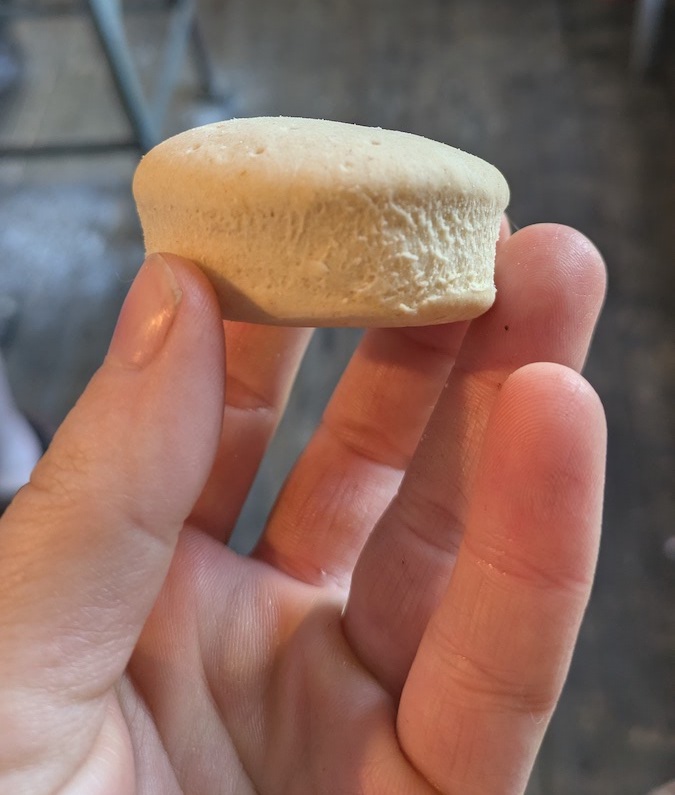
Bringing it home
Per the F.A. Yost Co.’s 1917 recommendation, Brendan gifted me a beaten biscuit machine for Christmas this year. This little table will have its own spot in the refinished Dalton kitchen, which, I probably need not say, will be candy apple green and appropriately devoid of built-in cabinets.
All Southern history is a sticky, complicated web. And as I can’t say it any better, I’ll borrow Dana Hecker’s words, “let’s also strike a blow for remembering, for truth-telling, and for venerating the dignity of working hands.”
With every crank of the handle on our beaten biscuit machine, I know I’ll remember the cooks who worked along East Seventh Street, circa 1915. And, at the risk of offending some people when I bypass the country ham for jam on my beaten biscuit, I’ll think of Sarah Dalton Todd.
Grace Abernethy is a historic preservationist and artist who specializes in caring for and recreating historic architectural finishes. She earned her Master of Science in Historic Preservation from Clemson University in 2011 and has worked on historic buildings throughout the eastern United States. Abernethy was a recipient of the South Carolina Palmetto Trust for Historic Preservation Award in 2014 and won 2nd place in the Charles E. Peterson Prize for the Historic American Buildings Survey in 2011. She and her husband, Brendan, moved to Hopkinsville from Nashville in 2020. She works as an independent contractor and is a board member of the Hopkinsville History Foundation.

